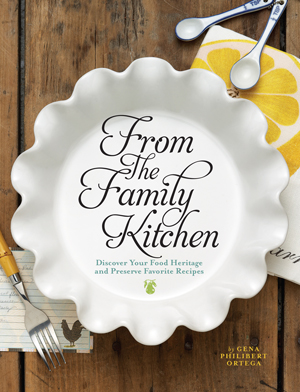 What demonstrates our cultural and ethnic heritage during the holidays more than food? It is not that what we are what we eat, but rather we eat what we do because of who we are. So much of our selection in food, and the way we prepare it, comes from family’s history. What will you have for your main dish this Christmas, ham, turkey, goose, lamb? What side-dishes do you only eat on the holidays? These decisions are typically adopted form our own upbringing, and are the same foods our parents, and their parents, and their parents ate at family functions.
What demonstrates our cultural and ethnic heritage during the holidays more than food? It is not that what we are what we eat, but rather we eat what we do because of who we are. So much of our selection in food, and the way we prepare it, comes from family’s history. What will you have for your main dish this Christmas, ham, turkey, goose, lamb? What side-dishes do you only eat on the holidays? These decisions are typically adopted form our own upbringing, and are the same foods our parents, and their parents, and their parents ate at family functions.
So what better way to celebrate the holidays than to examine our own family’s food heritage. From the Family Kitchen: Discover Your Food Heritage and Preserve Favorite Recipes, by Gena Philibert-Ortega, will help get you started. Food makes up, and takes up, a considerable portion of our human existence. A large portion of our time goes to earning an income, from which a significant portion goes to food. Hours can be spent each day preparing the daily meals. Major significance is given to the customs, habits, and manners surrounding food. This book will help anyone discover their food heritage.
- “Methods for gathering family recipes
- Interview questions to help loved ones record their food memories
- Places to search for historical recipes
- An explanation of how immigrants influenced the American diet
- A look at how technology changed the way people eat
- A glossary of historical cooking terms
- Actual recipes from late nineteenth–and early twentieth-century cookbooks”
The author suggests you are now thinking,”What does food have to do with genealogy?” Her response, “For me, the real question is why doesn’t everyone include food traditions in their family history? I grew up in Southern California. Mexican dishes from tamales to burritos and tacos to quesadillas have always been a common factor in my life. But, I remember when finding a taco stand in other states was nearly impossible. I remember hearing of family friends who moved back east and could only find tortillas in a can. Now, it seems Mexican dishes are nearly a mainstay of the average American home. This book walks the reader through understanding and preserving one’s own food heritage as well as researching and evaluating one’s ancestral dietary connections.
Table of Contents
Introduction
PART A: DISCOVER YOUR FAMILY’S FOOD HERITAGE
Chapter 1 Food Heritage
Genealogy is more than names and dates. Studying social history will help you better understand how your ancestors lived.
Chapter 2 They Brought Their Food With Them
Immigrants brought recipes, raw ingredients, and even seeds from their homelands. How did these food traditions meld into our ancestors’ diet?
Chapter 3 Oysters, Peacocks, and Green Jell-O
Food traditions vary by region, state, county, city, and even neighborhood. This chapter explores the impact of climate, ethnic and religious groups, and industry on our food.
Chapter 4 Food Throughout Time
The foods your ancestors ate were often influenced or dictated by technology, location, and social and political events such as economic depression and war.
Chapter 5 Cookbooks and Menus
This chapter explores the evolution of cookbooks since the eighteenth century and explores menus from nineteenth-century restaurants.
Chapter 6 How to Find your Ancestor’s Recipes
The best place to find family recipes is in your own home. You can also interview relatives and research local cookbooks to learn more about your ancestors’ diets.
PART 2: A LOOK BACK AT HISTORICAL RECIPES
Chapter 7 Decipher Old Cooking Terms
Having trouble understanding an old recipe? This chapter includes a vintage glossary of cooking terms, measuring charts, and cooking times.
Chapter 8 The Arts of Dining and Cleaning
Cookbooks are more than just recipes. Read vintage advice on menu planning, table setting and decorating, and proper cleaning techniques.
Chapter 9 Historical Recipes
This chapter contains recipes from both community cookbooks and cooking school cookbooks and from the late nineteenth and early twentieth centuries.
PART 3: RECIPE JOURNAL
Record you own family recipes in this journal section
Bibliography and Resources
Index
Make From the Family Kitchen: Discover Your Food Heritage and Preserve Favorite Recipes the perfect holiday gift. Order now from Family Roots Publishing ($27.43) and take advantage of their FREE shipping special on orders over $25 until 20 December 2012.